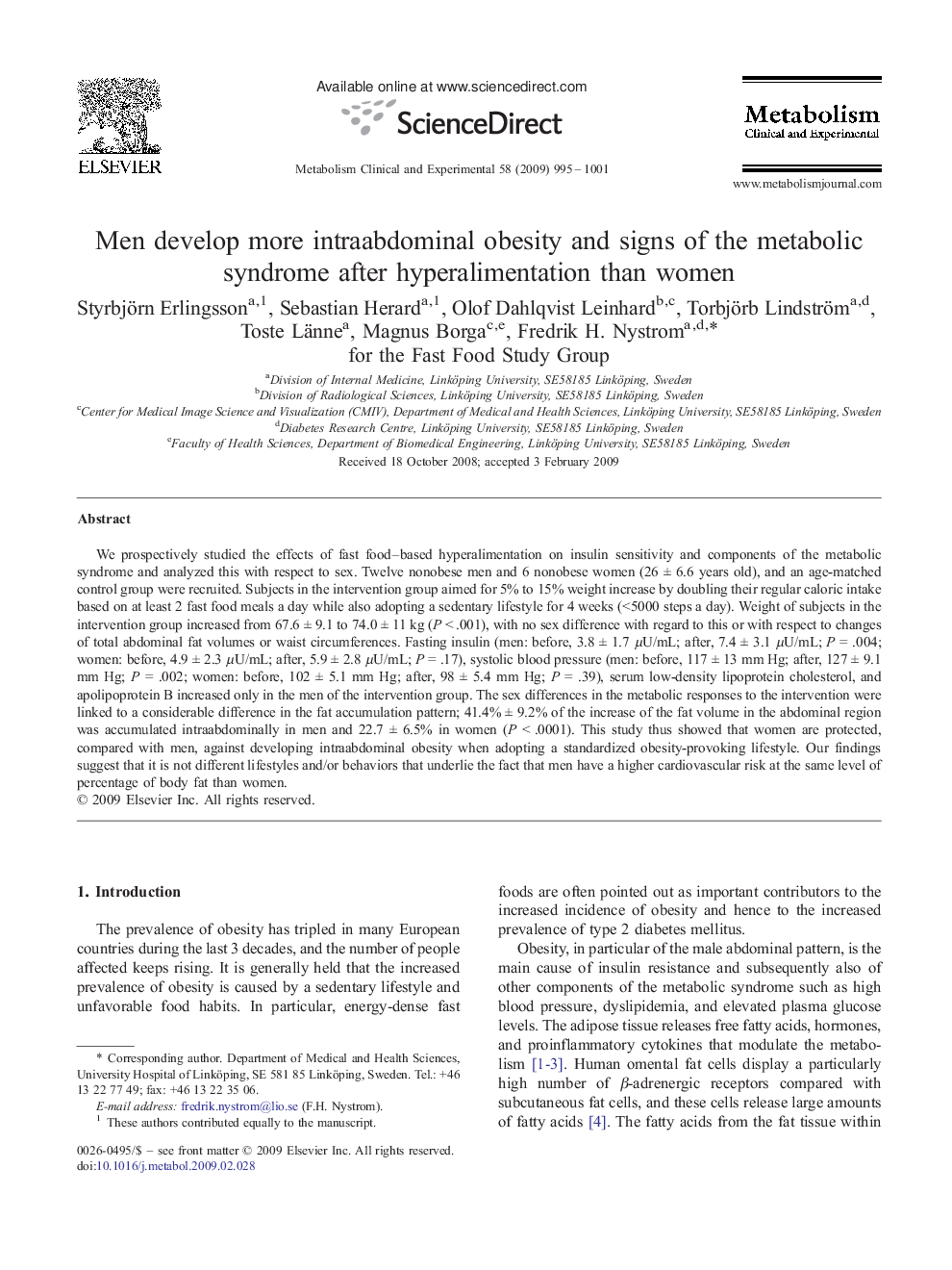| کد مقاله | کد نشریه | سال انتشار | مقاله انگلیسی | نسخه تمام متن |
|---|---|---|---|---|
| 2807258 | 1157155 | 2009 | 7 صفحه PDF | دانلود رایگان |

We prospectively studied the effects of fast food–based hyperalimentation on insulin sensitivity and components of the metabolic syndrome and analyzed this with respect to sex. Twelve nonobese men and 6 nonobese women (26 ± 6.6 years old), and an age-matched control group were recruited. Subjects in the intervention group aimed for 5% to 15% weight increase by doubling their regular caloric intake based on at least 2 fast food meals a day while also adopting a sedentary lifestyle for 4 weeks (<5000 steps a day). Weight of subjects in the intervention group increased from 67.6 ± 9.1 to 74.0 ± 11 kg (P < .001), with no sex difference with regard to this or with respect to changes of total abdominal fat volumes or waist circumferences. Fasting insulin (men: before, 3.8 ± 1.7 μU/mL; after, 7.4 ± 3.1 μU/mL; P = .004; women: before, 4.9 ± 2.3 μU/mL; after, 5.9 ± 2.8 μU/mL; P = .17), systolic blood pressure (men: before, 117 ± 13 mm Hg; after, 127 ± 9.1 mm Hg; P = .002; women: before, 102 ± 5.1 mm Hg; after, 98 ± 5.4 mm Hg; P = .39), serum low-density lipoprotein cholesterol, and apolipoprotein B increased only in the men of the intervention group. The sex differences in the metabolic responses to the intervention were linked to a considerable difference in the fat accumulation pattern; 41.4% ± 9.2% of the increase of the fat volume in the abdominal region was accumulated intraabdominally in men and 22.7 ± 6.5% in women (P < .0001). This study thus showed that women are protected, compared with men, against developing intraabdominal obesity when adopting a standardized obesity-provoking lifestyle. Our findings suggest that it is not different lifestyles and/or behaviors that underlie the fact that men have a higher cardiovascular risk at the same level of percentage of body fat than women.
Journal: Metabolism - Volume 58, Issue 7, July 2009, Pages 995–1001